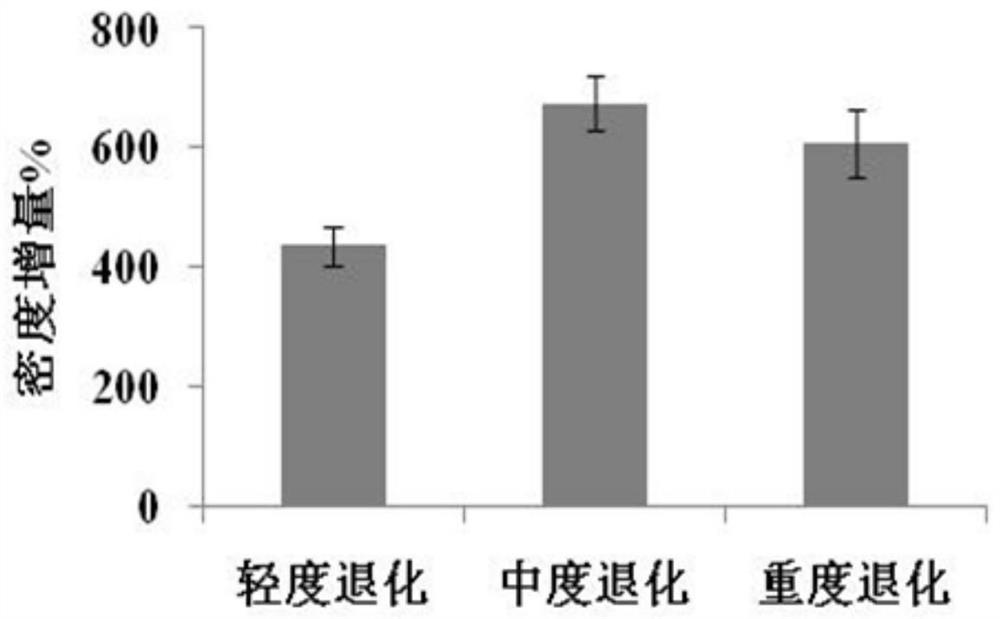A directional restoration method for degraded Sedge-Ceratophylla vegetation in floodplain wetlands
A technology for directional restoration and floodplain, applied in the field of directional restoration of degraded sedge-little leaf vegetation, can solve the problems of low efficiency, long vegetation restoration time, uncertain restoration results, etc., and achieves strong operability and strong nutrient absorption capacity. , the effect of improving competitiveness
- Summary
- Abstract
- Description
- Claims
- Application Information
AI Technical Summary
Problems solved by technology
Method used
Image
Examples
specific Embodiment approach 1
[0039] Embodiment 1: The directional restoration method of the degraded Sedge-Ceratophytum vegetation in the floodplain wetland of the present embodiment includes the following steps:
[0040] 1. The first vegetation survey is carried out at the end of June every year. 3-5 transects are set up in each wetland sample site, 3 quadrat are randomly set on each transect, and the plants in each quadrat are divided into four groups. Measure and record the coverage, above-ground biomass and density of each plant group in the quadrat;
[0041] Then the second vegetation survey will be carried out at the end of August. The method of the second vegetation survey is the same as that of the first vegetation survey;
[0042] After that, the results of the two vegetation surveys were comprehensively calculated to characterize the vegetation growth status of the wetland:
[0043] The plant coverage of each group is C=(C1+C2) / 2, where C1 is the coverage of the first survey, and C2 is the cove...
specific Embodiment approach 2
[0057] Embodiment 2: The difference between this embodiment and Embodiment 1 is that the sample strips in step 1 are set at a distance of 150-160m from the edge of the wetland, and the distance between the sample zones is 300-350m. Others are the same as the first embodiment.
[0058] The purpose of setting the transect in this way in this embodiment is to eliminate the marginal effect. 150-160m away from the edge of the wetland, the survey transect is designed mainly for the disturbance of human activities around the wetland, such as the degree of influence of roads, villages, etc., and the width of the transition zone between wetland and grassland or other ecosystems, etc., effectively avoiding the above-mentioned The influence of factors on wetland properties. In addition, the purpose of setting the distance between transects at 300-350m is to solve the problem that the distance between transects is too close and cannot fully represent the wetland properties.
specific Embodiment approach 3
[0059] Embodiment 3: The difference between this embodiment and Embodiment 1 is that in Step 1, the length of each sample tape is 60-65m, and the width is 30-35m. Others are the same as the first embodiment.
[0060] The setting of the transect size in this embodiment mainly satisfies the randomness and representativeness of the quadrat setup.
PUM
 Login to View More
Login to View More Abstract
Description
Claims
Application Information
 Login to View More
Login to View More - R&D
- Intellectual Property
- Life Sciences
- Materials
- Tech Scout
- Unparalleled Data Quality
- Higher Quality Content
- 60% Fewer Hallucinations
Browse by: Latest US Patents, China's latest patents, Technical Efficacy Thesaurus, Application Domain, Technology Topic, Popular Technical Reports.
© 2025 PatSnap. All rights reserved.Legal|Privacy policy|Modern Slavery Act Transparency Statement|Sitemap|About US| Contact US: help@patsnap.com



